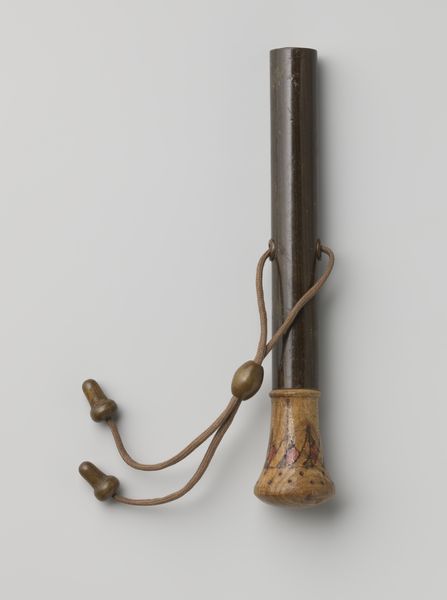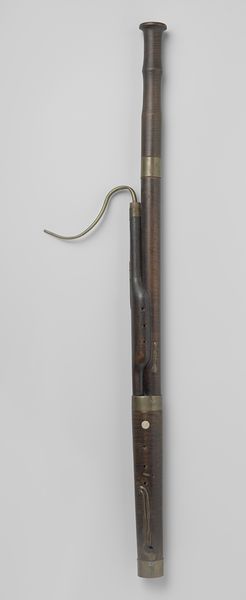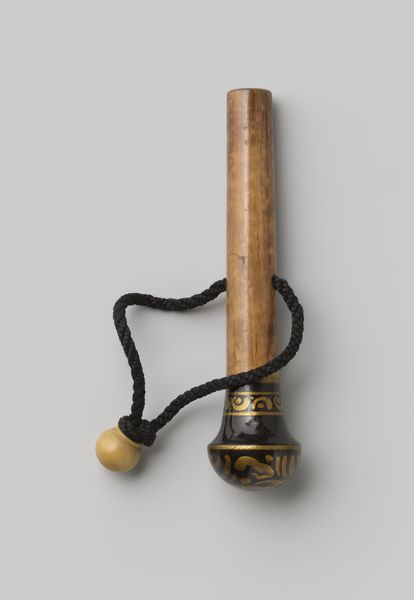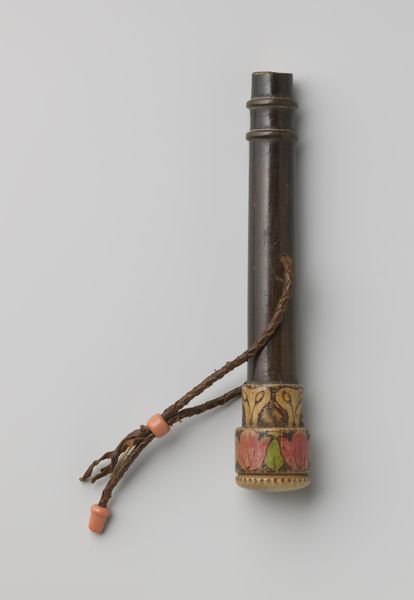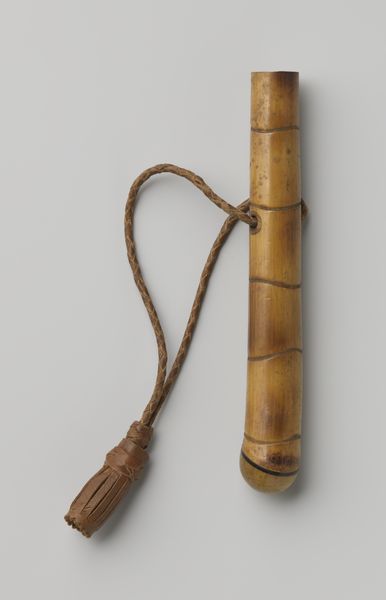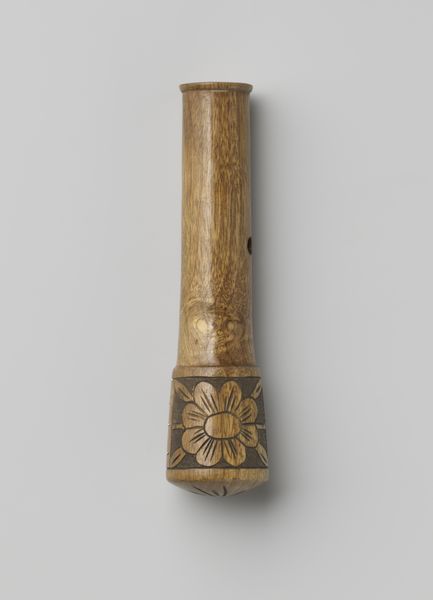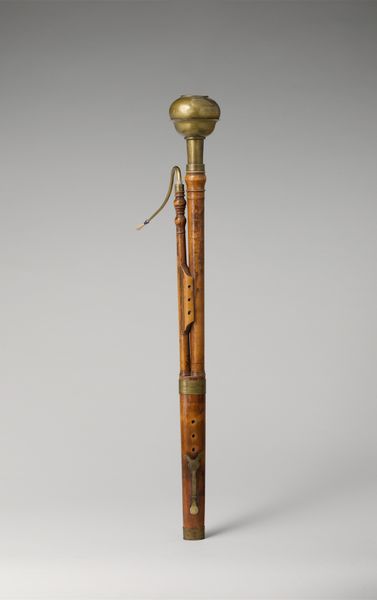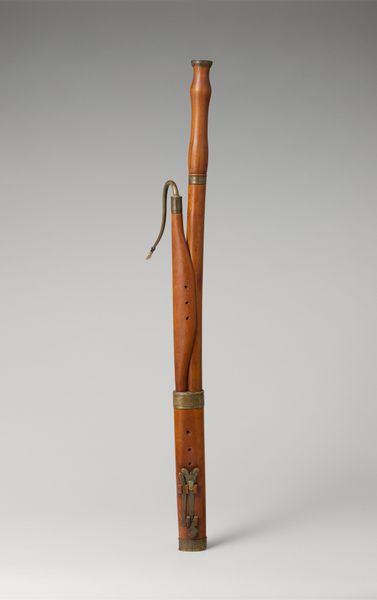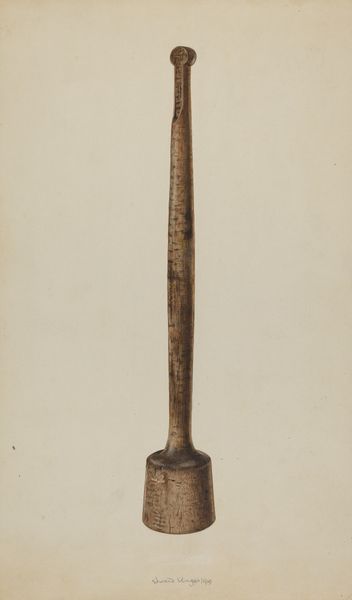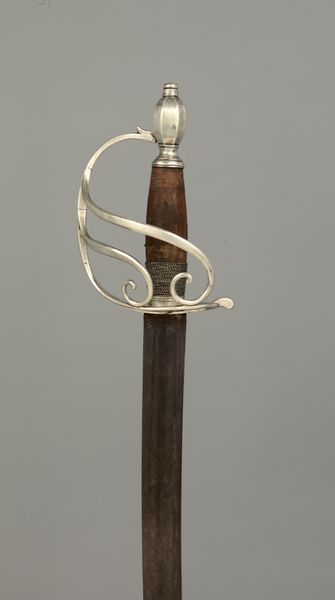
Parasolknop of parapluknop van hout; de afgeplatte knop is versierd met geschilderde bloemen c. 1920
0:00
0:00
gustavschnitzler
Rijksmuseum
painting, wood
#
painting
#
folk-art
#
wood
#
decorative-art
Dimensions: length 20.5 cm, diameter 4.5 cm
Copyright: Rijks Museum: Open Domain
Curator: At the Rijksmuseum, we find an intriguing piece of decorative art from around 1920: a wooden parasol knob, adorned with painted flowers. It offers a peek into the craftsmanship of the time. Editor: It’s charming! My first thought is how folk art often serves as a form of resistance, a way for marginalized communities to maintain cultural identity against dominant narratives. Curator: That's an interesting take. Typically, such pieces were commissioned by those with some degree of wealth and served more as markers of taste than statements of rebellion. The rise of consumer culture around that time impacted design trends and availability for diverse audiences, of course. Editor: Even within commissioned art, we can identify subversive acts. Folk art aesthetics employed in decorative objects like this can suggest an embrace of pre-industrial values—simplicity, connection to nature—as a counterpoint to the increasing mechanization of life after WWI. Curator: I see what you mean. The simplicity in design juxtaposes industrial design of the era which was known for streamlined efficiency, even with consumer items. The application of floral patterns—are those roses and pansies—may well signify a conscious return to nature that also implies a critique. The execution might lack technical refinement, perhaps indicative of the community from which it originated and therefore its relative position. Editor: Exactly! It invites us to consider who held the power to define "high" art and whose aesthetic was considered "common". What kind of cultural memory do you suppose that imagery invoked then, and does that still resonate today? Curator: I'm unsure about direct intention, but the imagery fits squarely within a broader European sentimentality regarding the natural world. I would be hard-pressed to frame the use of painted floral designs as 'resistance.' However, it does provoke an assessment about consumerism; consider how quickly taste and aesthetics adapted with shifting consumer culture as design quickly changed for commercial purposes. Editor: It speaks volumes, doesn’t it? Looking at this object forces us to confront assumptions we bring to art and design, recognizing folk traditions not just as quaint but as sites of social commentary. Curator: Absolutely. It enriches our understanding of the dialogue between craft, class, and commercialism during that era, even in a humble umbrella handle.
Comments
No comments
Be the first to comment and join the conversation on the ultimate creative platform.
